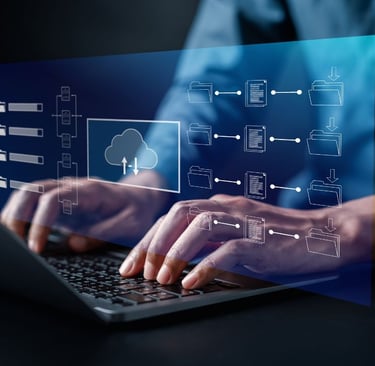LMS Migration Made Easy: A Strategic Guide by LearningStance
Switching your LMS doesn’t have to be a headache. In this blog, we break down the key steps to a stress-free migration.
LMS & PLATFORMS
LearningStance
6/11/20253 min read


Making the decision to switch your Learning Management System (LMS) is rarely an easy one. It often follows months, if not years, of frustration; outdated features, lack of flexibility, poor user experience, and reporting limitations that leave learning teams guessing. The idea of upgrading is appealing, but the process can be overwhelming.
The good news is that LMS migration does not have to be painful. With the right planning, clear objectives, and a learner-focused approach, organizations can transition smoothly while strengthening engagement, efficiency, and impact. This guide by LearningStance speaks on how to approach LMS migration in a way that is strategic, structured, and sustainable.
Why Organizations go for LMS Migration
There are many reasons companies move away from their current LMS. As learning needs evolve, platforms must keep up with the pace of change, supporting dynamic content delivery, integrations, and user engagement.
Some of the most common drivers for migration include:
Outdated user interface and poor learner experience
Limited mobile access or offline capability
Weak integration with HR systems or third-party content
Inadequate reporting and analytics tools
Difficulty scaling across departments or geographies
High maintenance costs with limited functionality
Upgrading to a modern LMS can unlock better performance, cost savings, and alignment with business goals.
What Makes LMS Migration Successful?
Migration is not just about moving courses and users to a new platform. It is about improving how learning is delivered, measured, and experienced. A successful transition requires thoughtful planning and execution across the following areas:
1. Define the Purpose
Before moving forward, clarify the reason for the migration. Are you aiming to improve reporting? Reduce administrative workload? Expanding global access? Establish success metrics early, and ensure all stakeholders are aligned on the objectives.
2. Audit and Prioritize
Do not assume every piece of content or data should come with you. Review what is valuable and current, and identify:
High-performing and high-usage courses
Critical compliance or certification content
Redundant or outdated materials
Mandatory versus optional programs
This step helps streamline your migration and optimize the learner experience in the new system.
3. Plan for Data and System Compatibility
Each LMS handles data differently. Careful mapping and testing are essential for preserving key information. Ensure that:
Learning formats such as SCORM or xAPI are compatible
Completion records and certificates are accurately transferred
User roles and permissions align with the new structure
System integrations function correctly from day one
Validating this in advance prevents disruptions and data loss.
4. Adopt a Phased Rollout
Avoid the risk of a full-scale migration on day one. A phased rollout allows you to pilot with a specific team or region, test for issues, and make improvements before expanding.
5. Communicate Clearly
Inform your learners and stakeholders early and consistently. Good communication builds trust and improves adoption, include:
Key milestones and timelines
What is changing and why
How to access training or support
What learners can expect from the new experience
Providing FAQs, demo sessions, or quick-start guides can be especially helpful.
6. Train Your Teams
Ensure administrators, learning designers, and business partners are trained on the new system. Focus on how to manage content, access reports, and support learners. Effective training reduces reliance on support teams and increases confidence across the organization.
The Learning Science Behind Migration
Technology alone is not enough. Behavioral science and learning theory play a key role in the success of any transition.
Cognitive Load Theory: Simplifying the user interface and navigation helps reduce overwhelm, especially during the change period.
Adult Learning Principles: Systems and content should be relevant, practical, and aligned with real job tasks.
70-20-10 Model: The LMS should support not just formal learning, but also social and on-the-job experiences.
Agile Implementation: Rolling out in iterations allows for continuous feedback, refinement, and increased user engagement.
These frameworks help ensure that your LMS migration is not only technically successful but also behaviorally effective.
Final Thoughts on LMS Migration
LMS migration is a major step, but it can be a turning point for transforming your learning function. When done with care, it becomes more than a system upgrade—it becomes an opportunity to improve learning strategy, align with business outcomes, and empower your people with the tools they need to grow.
However, the path to a successful migration is not always obvious or straightforward. That is where expert guidance can help.
How LearningStance Can Help
At LearningStance, we specialize in LMS migrations that are efficient, secure, and based on learning science. From platform selection and data strategy to user onboarding and continuous support, we help you take control of your transition without losing time, talent, or momentum.
Ready to make the switch with confidence?
Contact us today to learn how we can support your migration journey.
business@learningstance.com
